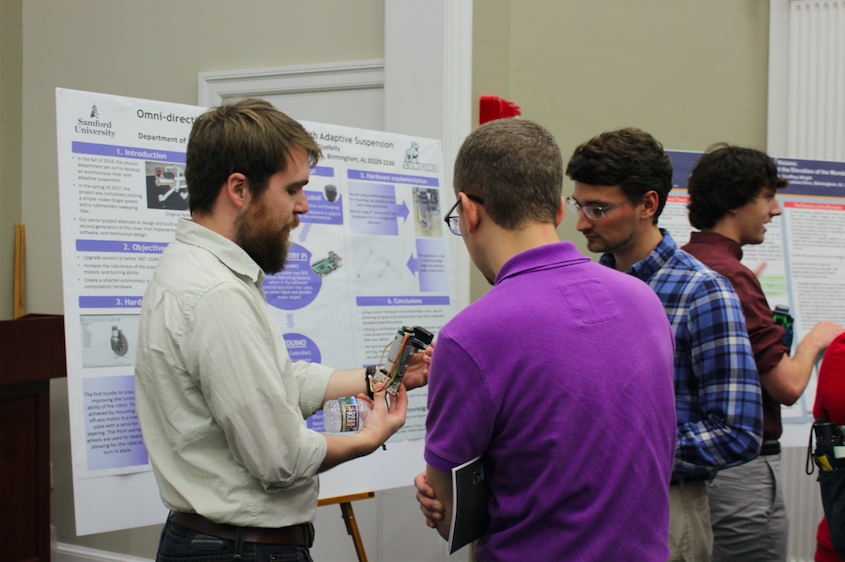The first Undergraduate Research Fair was held last week in the Howard room on Friday April 20. Sixteen students presented research on a poster format. “We want to give the Samford community and constituents an opportunity to see the type and variety of undergraduate research happening in the college and an opportunity to meet and learn more about our Howard Scholars,” Associate Dean of Howard College of Arts and Sciences Emily Hynds said. For the fair, students chosen to present research topics were picked by department heads. In the future, the program hopes to have a more open application process according to Hynds. “The format is a drop-in poster session. There will be 16 academic posters set up around the room displaying the research. As schedules permit, the students who did the work will be standing with their posters to discuss their work with visitors,” Hynds said. There was no theme for the fair, which presented an opportunity for students to share the research they had done and the diversity in each department. “Every department has a representative to showcase the type of research students can do as undergraduates,” Hynds said. The fair was part of an effort to inform the campus about the Howard Scholars program. “Howard Scholars is a community of demonstrated intellectual leaders who serve as academic ambassadors to Howard College of Arts and Sciences,” according to the Howard Scholars website. “Dedicated to scholarly excellence in a liberal arts environment, members participate in a variety of activities that promote research and interdisciplinary engagement both within the group and throughout the college.” The students covered a wide range of topics. Senior international relations major Kathryn King performed a case study between George W. Bush and Richard Nixon’s presidential administrations. King said she chose them due to their contrasting leadership styles. King compared their decisions during military campaigns such as when Nixon invaded Cambodia and Bush during the Iraq War. For Nixon, King said everyone helped with policy but a hierarchy existed. Whereas Bush depended on advisers and his advisers debated policy. “Nixon ran a highly centralized management style like a chain of command,” she said. Besides presidents, King also compared each administration’s national security advisers. King said Bush’s adviser, Condoleezza Rice, served as administrator and didn’t dictate policy. Rather than sharing her ideas and influencing policy, she supplied ideas. “Rice ensured everyone else was heard,” said King. King said Nixon’s advisor, Henry Kissinger, heavily influenced policy. “Kissinger thought he was intellectually superior to everyone else,” said King. King said her research can help predict President Trump’s leadership style and future administrations. “We can already see his formal management style and it’s a hierarchy,” she said. “He deems who is going to be heard and that’s not necessarily a bad thing because that’s worked well in other administrations.” Besides Nixon, King said Harry Truman also adopted this leadership style. Other research topics included news media and immigration.
Daniel Dotson, News Writer






